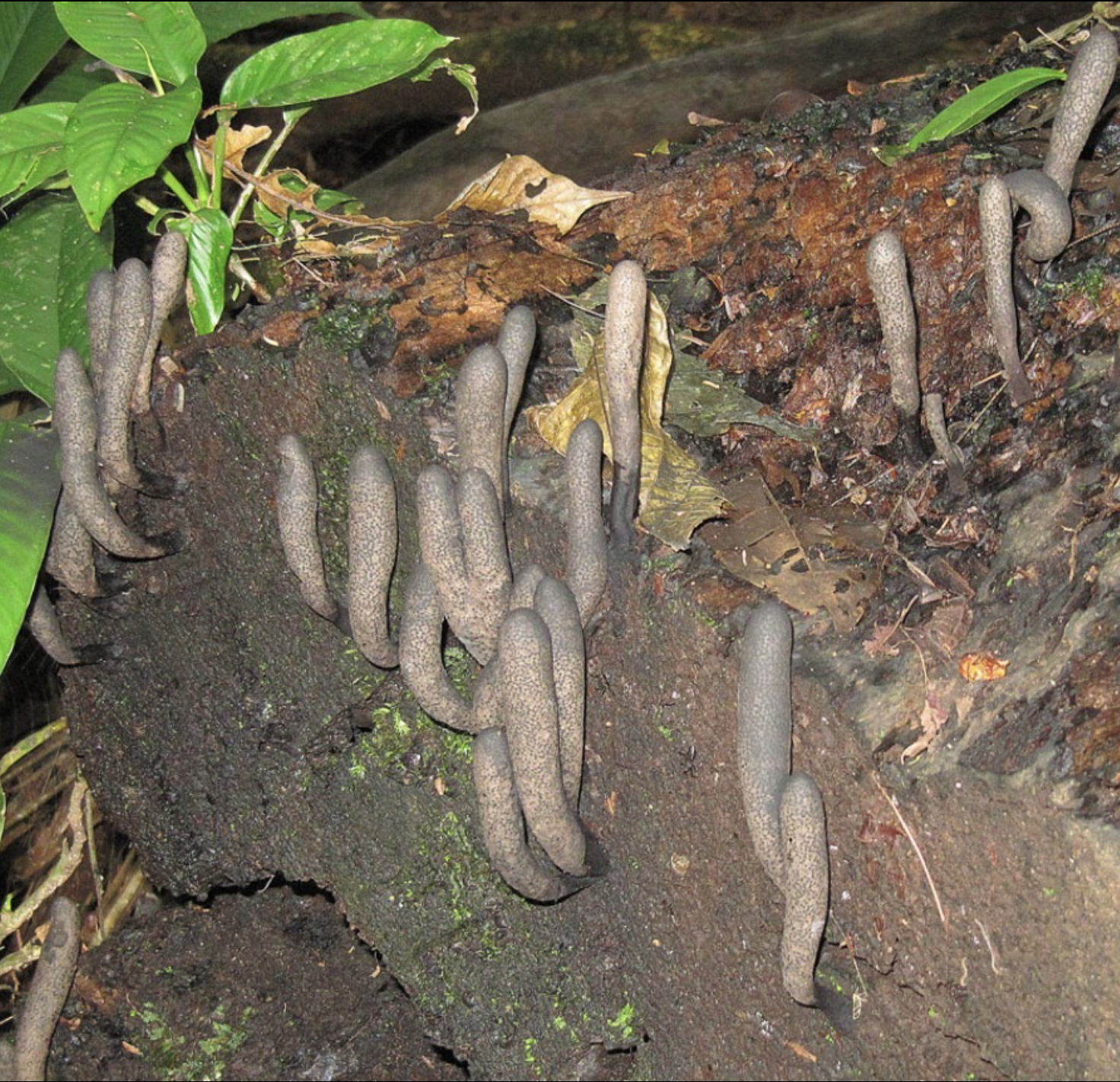🖐️ What Exactly Are Dead Man’s Fingers?
Dead Man’s Fingers is a species of saprophytic fungus — meaning it feeds on dead and decaying organic matter, not living trees.
Unlike mushrooms that pop up overnight with caps and stems, this fungus grows in irregular, finger-like clusters that emerge from buried hardwood roots or stumps.
Key Features:
✅
Appearance
Resembles blackened human fingers, fused at the base
✅
Color
Charcoal black to dark gray; sometimes with a powdery white tip when young
✅
Texture
Hard, woody, and brittle — not soft or fleshy
✅
Size
1–6 inches tall, often in groups of 3–5 “fingers”
✅
Growth Season
Late summer to fall — especially after rain
💡 Pro Tip: They’re often hidden under leaf litter — look near old tree stumps or fallen logs.
🔬 The Science Behind the Spookiness
Despite their macabre name and look, Dead Man’s Fingers are completely harmless — to humans, animals, and healthy trees.
How They Work:
They grow inside dead hardwoods (like oak, maple, or beech)
Their underground network (mycelium) slowly decomposes lignin and cellulose
Over time, they break down tough wood fibers into simpler compounds
These nutrients are returned to the soil, feeding new plant life
✅ In short: They don’t kill trees — they clean up after them.
This makes them essential decomposers — part of nature’s cleanup crew.
🧫 Not a Mushroom — But a Fungal Fruiting Body
While many people call it a mushroom, Xylaria polymorpha doesn’t produce gills or spores in the same way.
Instead:
The « fingers » are fruiting bodies — reproductive structures
When mature, they release spores from their tips (often appearing as a white or bluish powder)
These spores drift on the wind, seeking new sources of dead wood to colonize
✅ Think of them as nature’s seed pods — but made of carbon and mystery.
🌲 Where & When to Find Them
📍
Habitat
Deciduous forests, wooded trails, parks with old trees
🪵
Substrate
Buried roots, stumps, or decaying logs of hardwood trees
📅
Season
Late summer through autumn — especially in moist conditions
🌧️
Weather
More visible after rain — humidity triggers growth
🚫 Not edible. While not highly toxic, they’re too tough and woody to eat — and have no culinary value.
🎃 Why the Name “Dead Man’s Fingers”?
The name speaks for itself.
When fresh, the tips can appear slightly pale or ashen — like fingernails.
As they age, they darken to a deep, almost burnt black.
Their shape? Uncannily humanoid.
Folklore has long associated them with death and the supernatural:
Some believed they marked burial sites
Others thought they were omens
In modern times, they’ve inspired horror films, video games, and art
But in reality?
They’re silent recyclers — doing vital work beneath our feet.
🤔 Common Myths vs. Reality
❌ “It’s parasitic and kills trees”
✅ No — it only grows on already dead or dying wood
❌ “It’s dangerous to touch”
✅ Harmless — though wash hands afterward (as with any wild fungus)
❌ “It’s rare”
✅ Fairly common in hardwood forests — just easily overlooked
❌ “It glows in the dark”
✅ Nope — that’s
other
fungi like foxfire (
Panellus stipticus
)
💡 A Reminder: Not All That Looks Eerie Is Evil
Nature loves drama.
Evolution favors survival — not cuteness.
So while Dead Man’s Fingers may look like something from a zombie movie…
It’s actually a keystone decomposer, quietly helping forests regenerate.
Every fallen tree, every rotting root — broken down by unseen forces.
And this strange, fingered fungus?
It’s just doing its job.
💬 Final Thoughts: Look Closer. Be Curious. Stay Calm.
That first sighting — a blackened hand rising from the forest floor — can stop you cold.
But instead of stepping back in fear…
Try crouching down.
Look closely.
Appreciate the form.
Marvel at the function.
Because sometimes, the most unsettling things in nature aren’t threats.
They’re teachers.
And once you learn what Dead Man’s Fingers really is?
You might just find yourself smiling at the next one you see — knowing you’ve met a silent guardian of the forest floor.
After all:
The real horror isn’t the fungus.
It’s not recognizing the beauty in decay.
